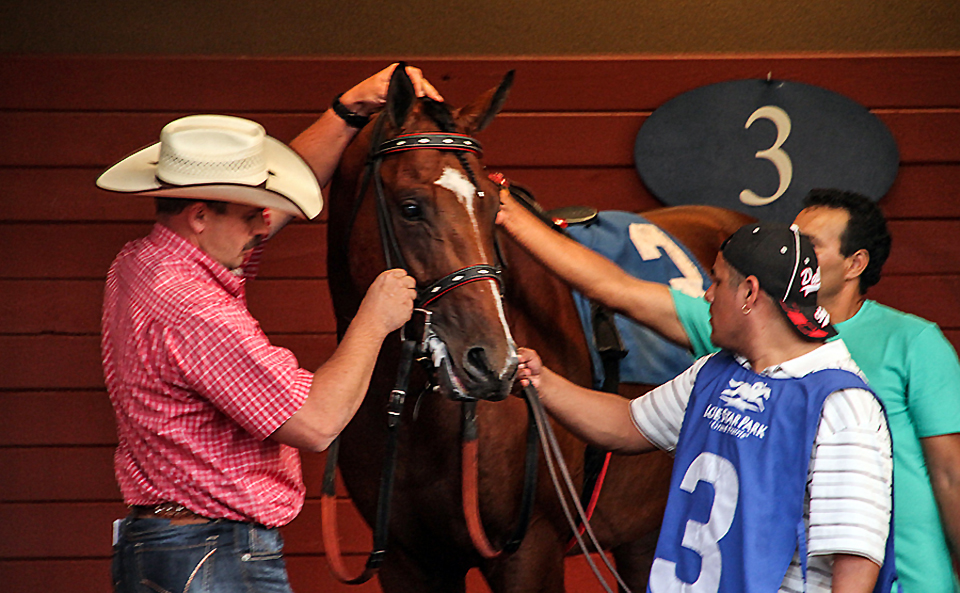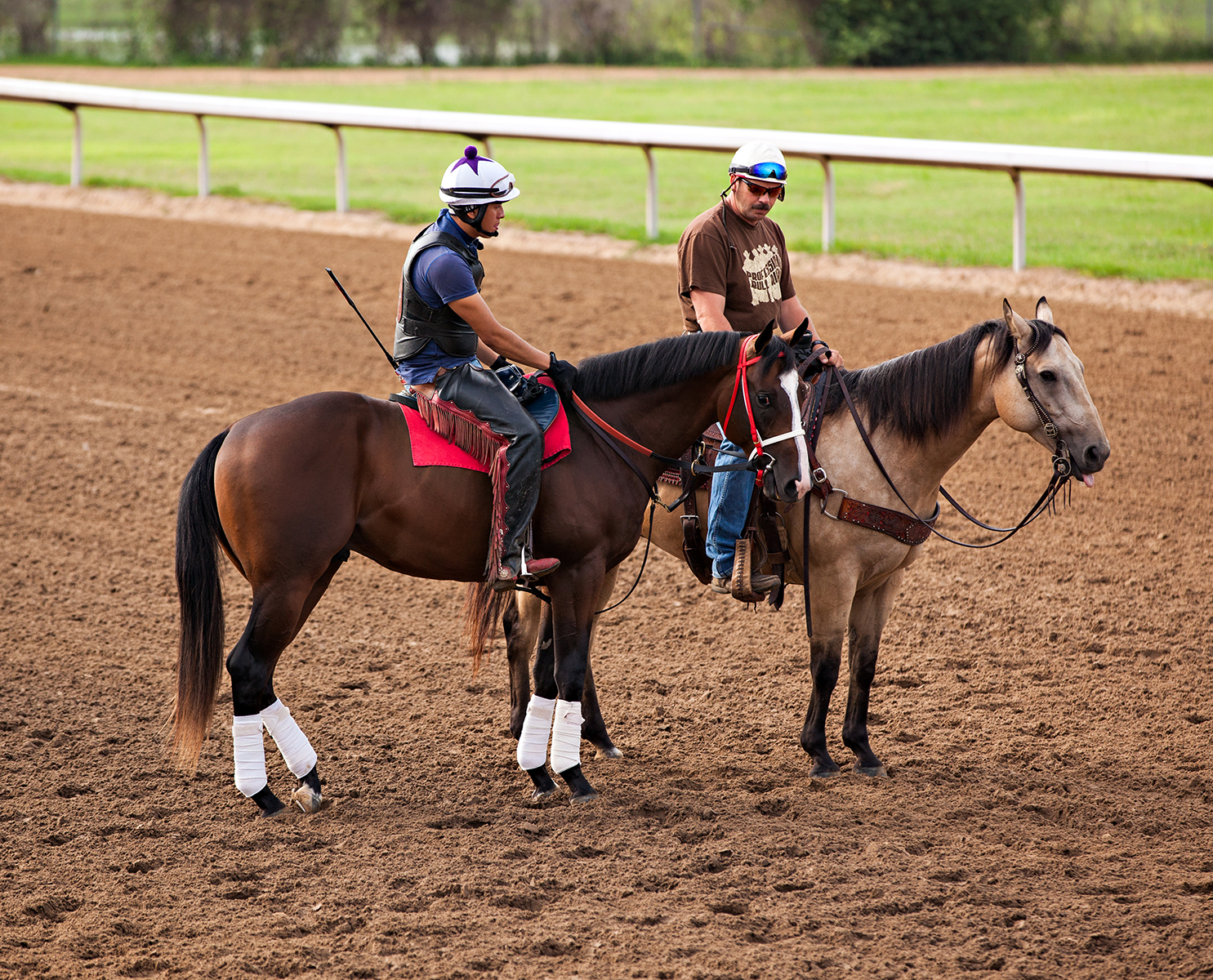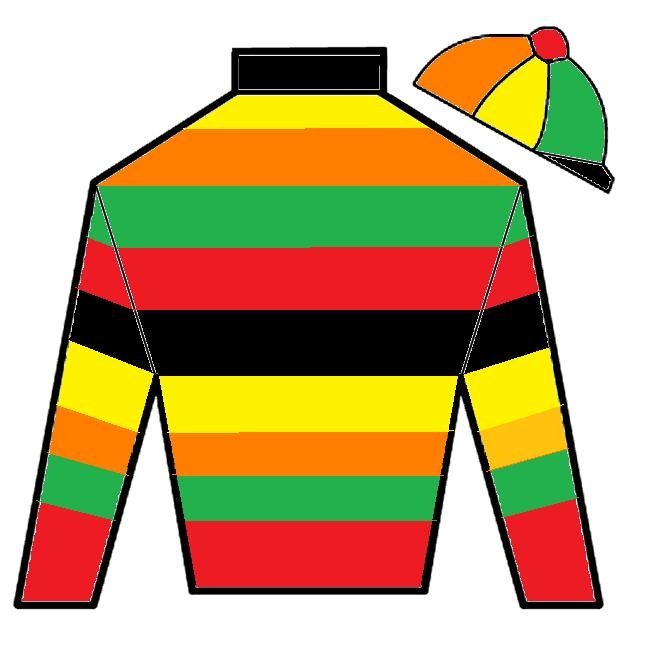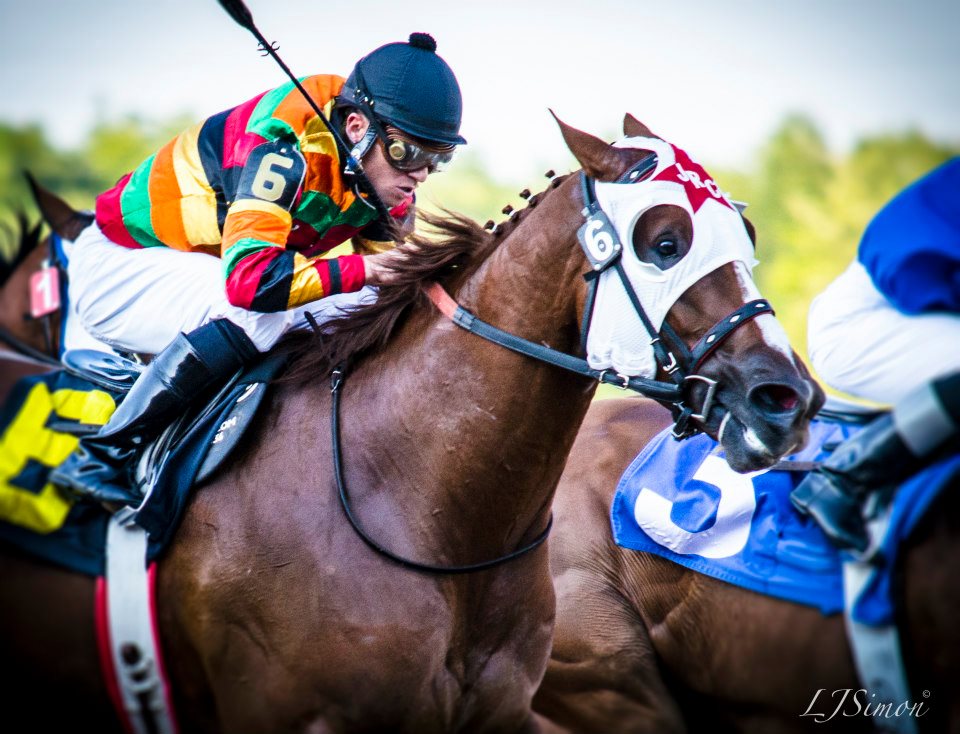Preparing for a Big Race
Q&A with JR Caldwell
May 2, 2020
 
A coach is someone who
works with and teaches someone (or something) to prepare and achieve their peak performance. In horse racing, the trainer is the coach. For
Mojo Racing Partners, JR Caldwell is the dedicated coach for all of our Runners.
JR
is a Texas-based, multiple stakes winning trainer. JR began his training career
in 1994 and, since then, he’s had over 4,800 starts from which he’s produced over
$11.7 Million in earnings.
JR
trains on the Southern racing circuit that includes stables at Lone Star Park,
Remington Park, Oaklawn Park, and Sam Houston Park. He also races at Arapahoe Park, Delta Downs,
Louisiana Downs, and Prairie Meadows. Currently, there are 40 horses in
training with JR. 15% of the runners under JR’s care have been winners, and 40%
have finished “on the board” (WPS).
Since 2012, Mojo has
teamed up with JR Caldwell to acquire, prepare, and lead our racing operations.
After partnering with JR, Mojo’s organizational structure, business model, and results
have blossomed. Starting with a gutsy
claimer named Jackrabbit Fast, Mojo and JR have gone on to produce a 50% Win/Place/Show
(WPS) record in over 160 starts, we’ve had multiple stakes runners, and a
$100,000 stakes winner.
For the
final feature in Mojo’s Virtual Derby Festivities, Fred Taylor (Founder and CEM
of Mojo Racing Partners) sat down with JR to talk about the differences between
horses that run in stakes races and those that compete on the undercard. JR
will also share with us how his team prepares during the week leading up to a
big race.
Fred: When you have a
horse with the talent to race at the stakes level, what is your training
strategy a week or two before a big race? In other words, the week before
the big race, does a stakes horse require a different training regimen or do
they need to stick to the same training program that other horses follow?
JR: Because they have talent that’s
based on their natural ability, stakes horses are the easiest to train; their
routines are like clockwork; and, aside from weather disruptions, they stick to
a predetermined schedule.
Once
a runner develops into a true stakes horse, their routines are mapped out based
on an intended race schedule for a whole year unless unforeseen circumstances
happen like a human or equine quarantine—which we’ve had to deal with both in
the last six months.
So,
when a stakes horse reaches top form, they are pointed for key races with a
plan to maximize their talent on the biggest stages. When the races are picked out, then a
training schedule is made for their works leading up to the races they are
pointed to run throughout the year.
Then
we focus on them and their health to ensure they are able to achieve maximum
performance for their big race days. Of course, variables can change daily, but
the rule of thumb is maintaining a fit, healthy, and happy stakes runner. When
we have that type of athlete in the barn, everything revolves around keeping
the horse at the highest level.
Fred: The other horses in your barn receive really
good care too.
JR: Absolutely—all of the
horses in my barn, whether they are stakes runners or claimers, receive the
same nutrition, bedding, grooming, and daily training; but claiming horses,
because they don’t have the same talent, their opportunities to race are
different from stakes horses.
The
track publishes a book of races (the Condition Book) that includes stakes,
allowance, and claiming conditions. They’re
going to run the stakes races on the scheduled dates; but there’s no guarantee
they will use any of the claiming races in the book—whether the claiming races
are used depends on having enough horses for the race conditions offered.
Fred: The unpredictability
of whether the track uses claiming races (or not) seems like it would make planning
the training routines for horses racing at the claiming levels more challenging.
JR: It can, for sure.
Horses in the claiming ranks are constantly being subjected to adjustments. And,
because it’s impossible to keep any horse at its peak performance 24/7, the
training schedules of claiming horses get disrupted often (shortened or
extended as the ideal races come and go), and that factors into their level of
readiness on race day.
Fred: So, what can you do
to counteract the race scheduling inconsistencies?
JR: I try to make sure all
of my claimers feel good, always have a solid base under them, and they develop
steady temperaments so they can physically and mentally handle the changes in
their racing schedules. This is easier to achieve with horses that go through
my baby development program, but it can take longer when they come from other
trainers and/or training centers.
I
also stay in close contact with the racing office so I’m knowledgeable of the scheduling
frequency for the different race conditions that I want my horses to run. I’ll
decide how to train the horses based on upcoming race opportunities. Basically,
I don’t want to constantly drill a horse if it’s not going to be able to race
for several weeks—that can put unnecessary wear & tear on a horse. And, I might
use a race as prep for a horse’s next start.
So,
unlike stakes horses that have predictable schedules and set routines, my training
strategies for my claiming horses differ based on what’s being offered and can
quickly change with the way the race offerings come around.
Fred: Alright, once
the race comes around, the next steps are the entry and post position draw.
There’s a lot of coverage that goes along with the post position draw for The
Derby—part of it is the hype leading up to the Run for the Roses, as well as
the intrigue about which horses will get the best spots and which horses will
have the least desirable starting positions. Is the process of the draw the
same for all races or different for the big stakes? What post position do you like/prefer?
And, do you have different strategies for different post positions?
JR: The overall draw
process is fundamentally the same for all races; but, the tracks and event
promoters (sponsors) make a big deal out of the post position draw for their
premier races to create interest and extend the storyline for the event. The
coverage is good for the sport, but the process is the same as any other race.
Depending
on the race distance and the running style of the horses entered, the post
position can be a factor. In the Derby, if all spots are filled, there are
physical and statistical disadvantages for certain post positions (based on the
location of the starting gate and the number of horses in the race). In a short
sprint race, the horses closer to the rail typically have an advantage because
they have a shorter distance to run around the track (than does a horse that
starts further away). And, there are
racing styles that differ by racing region that can factor into the race
strategy a trainer wants to implement.
To
me, the form (i.e., the historical racing
patterns) of the other horses in the race is more important than a specific
starting position. Horses usually perform in the same general manner based on
their talent, experience, and liking for a racing surface. In other words, some
are always going to be front runners, some are going to stalk the pace, and
some are going to be strong closers. These
things can change if a horse’s mental and physical maturity evolves with
experience. So, being mindful of how the competition typically runs (by looking
at their past performances) factors into what my horse will have to contend
with and the instructions I give the rider based on what I know my horse is
capable of doing.
Then,
of course, once the gate opens and the way the race unfolds, my rider has to
decide if things are likely to go as planned or if adjustments have to be made
on the fly based on uncontrollable circumstances.
Fred: On race day,
what things are you and your team doing to get the horse ready to run?
Does the time of the race (afternoon or night) change your race day
tasks? Does a horse know that it’s race day?
JR: We try to keep things
as consistent and normal as possible. We want the barn to be quiet and settled
on race day. We don’t want to disrupt a horse’s routine. Based on the time of
the race, especially if it’s late in the evening, my team will adjust some
routines so it fits the post time schedule.
Some
horses—especially the older horses that get used to a routine—know it’s race
day when the basic patterns change and they are given their race day
medications/inspections. Some get there game face on because they like the
action; some get really amped up and anxious when they figure out what’s going
on; and some are unfazed and just sleep.
The
time of the race will alter their feeding schedule and, of course, their
training routine—because they aren’t going through the morning exercise on race
day/night. Horses are pretty forgiving creatures; they all receive three
feedings a day; but, on race day, we save their big meal until after the race
(so they don’t have any digestive issues prior to/during the race).
Mojo Background
Mojo Thoroughbred Holdings, LLC (which
conducts its racing operations as Mojo Racing Partners) is based in
Fort Worth,
TX and was formed in 2006. Since then, Mojo has raced at
Arapahoe Park, Arlington Park,
Churchill Downs, Delta Downs, Ellis Park, Evangeline Downs, Indiana Downs, Keeneland, Kentucky Downs, Lone Star
Park,
Oaklawn Park, Prairie Meadows, Remington Park, Sam Houston, Turfway Park, and Zia Park.
Mojo’s
on a mission to give people affordable and fun opportunities to participate in the exciting sport of
Thoroughbred
racing.
You
can also follow Mojo on Facebook and
get the latests Mojo Tweets
|










